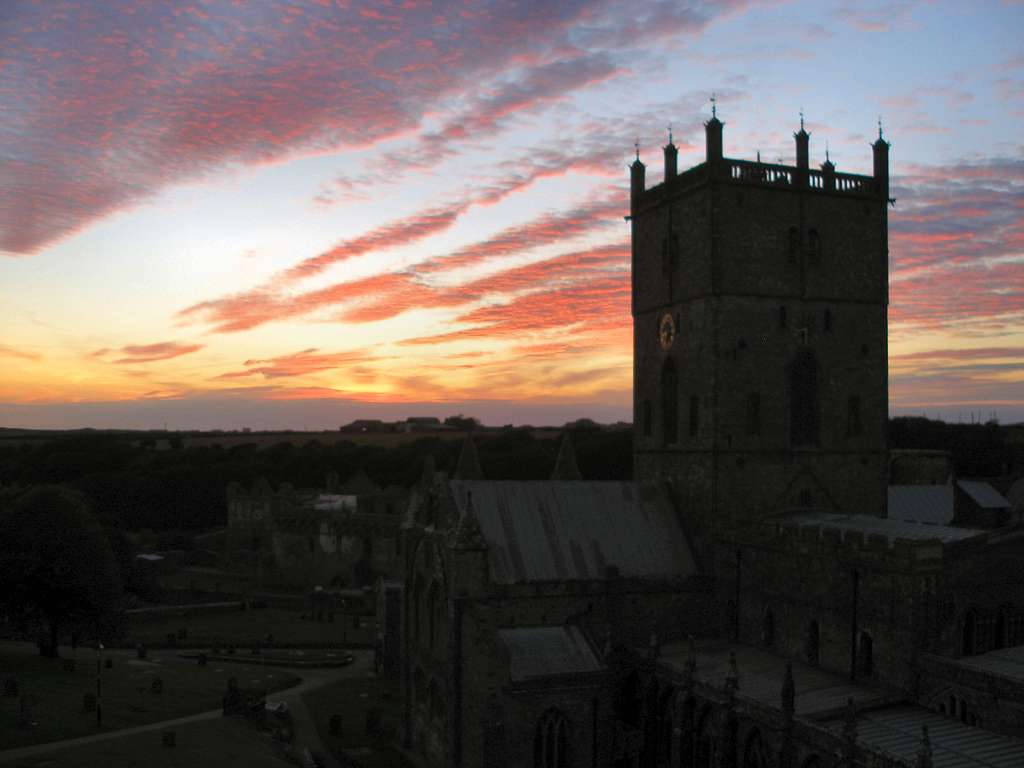
St. David's Catherdal, Pembroke (August 2007).
St. David, who was to become patron saint of Wales, was born in around 500AD, possibly to the then king of Ceredigion, but possibly not. According to legend, David was conceived through violence and his mother, gave birth to him on a cliff top during a violent storm. He was probably educated at Whitland in Carmarthenshire under Saint Paulinus of Wales and was baptised by St. Ailbe.
He travelled widely, and became renowned as a teacher and preacher, founding monastic settlements and churches in Wales, Cornwall and Brittany in a period when neighbouring tribal regions were still mostly pagan. He rose to a bishopric, and presided over two synods, as well as going on pilgrimages to Rome and Jerusalem where he was anointed as an archbishop by the Patriarch.
He is said to have performed many miracles, the most famous of which goes that while preaching to a crowd in Llanddewi Brefi in Ceredigion, the ground on which he stood rose up to form a small hill, so that all the spectators could hear and see him. A white dove was seen settling on his shoulder - a sign of God's grace and blessing.
He established a monastery at Glyn Rhosyn in Pembrokeshire, which was then one of the wildest, most remote places in Britain, and on which St David's Cathedral and city now stand. The cathedral in its present form was built in 1181.
Apparently David lived for over 100 years, and died on a Tuesday 1 March (now St David's Day) in around 589 or 590. The monastery is said to have been 'filled with angels as Christ received his soul'. He was buried at St David's Cathedral where his shrine was a popular place of pilgrimage throughout the Middle Ages. Unlike many contemporary 'saints' of Wales, David was officially recognised by Pope Callixtus II in 1120 thanks to the work of Bernard, Bishop of St David's.
